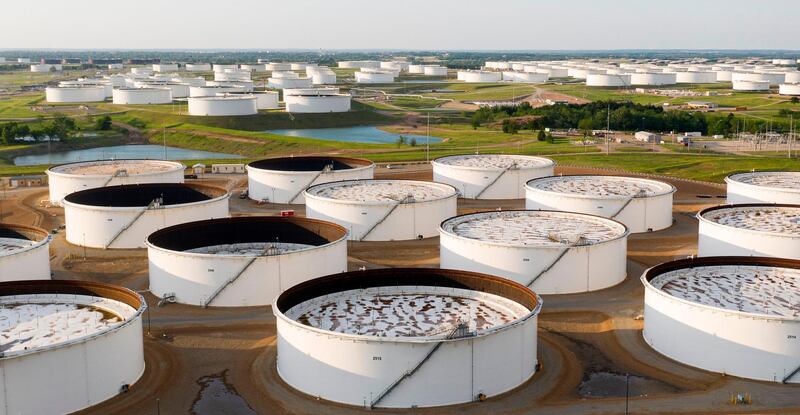Oil prices rallied for the fourth week bolstered by supply cuts and a revival of economic activity as lockdown measures are eased in many countries.
West Texas Intermediate, the key US gauge, finished the week gaining 12.97 per cent, after rallying throughout the week in stark contrast to the negative plunge seen during the same time last month. Futures dipped slightly by 1.98 per cent to settle at $33.25 per barrel on Friday. Brent, the international benchmark, registered an 8 per cent weekly gain, closing at $35.13 per barrel, down 2.58 per cent on Friday.
A resurgence in Chinese demand for oil to 90 per cent of pre-Covid levels by the end of April, was a "welcome signpost for the global economy", said Jim Burkhard, vice president and head of oil markets, IHS Markit.
"When you consider that oil demand in China—the first country impacted by the virus—had fallen by more than 40 per cent in February—the degree to which it is snapping back offers reason for some optimism about economic and demand recovery trends in other markets such as Europe and North America," he added.
However, while a revival in Chinese demand for growth is hopeful, the country is far from fully recovered. Beijing made a rare decision not to set a GDP target for 2020 as it assesses the full economic fallout from the coronavirus pandemic.
“I would like to point out that we have not set a specific target for economic growth this year,” Chinese Premier Li Keqiang said following the opening session of the National People's Congress in Beijing on Friday.
The world's second-largest economy contracted 6.8 per cent in the first quarter as the pandemic which started in China brought the country to a virtual standstill.
Supply also retreated further, as US drillers stopped production, even as Opec+ oil producers continued to cut back more than 9.7 million barrels per day in May and June. Rig counts in the US, an indicator of upstream activity, slipped to the lowest levels since 2009, as shale independents continue to shut in production.
Rig count data from Baker Hughes indicated a fall by 21 to 237 for the week ending Friday.
US producers are in the process of halting 1.75m bpd of production by early June due to operating losses, lack of demand and storage capacity, noted IHS Markit.
The producers are also unwilling to sell their crude at very low prices after the pandemic induced a demand crunch globally.
US crude futures fell as much as -$40 per barrel during trading last month, close to the expiry of the May contract as storage capacity at WTI’s physical delivery point in Cushing, Oklahoma dried up.
“Not even the United States’ huge network of storage facilities and associated infrastructure was enough of a buffer for a crisis on this scale," said Raoul LeBlanc, vice president, financial services, IHS Markit.
"Negative oil prices and the collapse of WTI futures contracts were a potent signal that stronger measures, namely shut-ins, were needed to curb oversupply".
Production could return in the summer and autumn of this year as fundamentals tighten and people are allowed greater mobility following easing of lockdown measures.
The resumption of production could accelerate if WTI remains above $30 per barrel, a price that allows operators to cover their operating costs and reflects improved storage availability, according to the consultancy.








